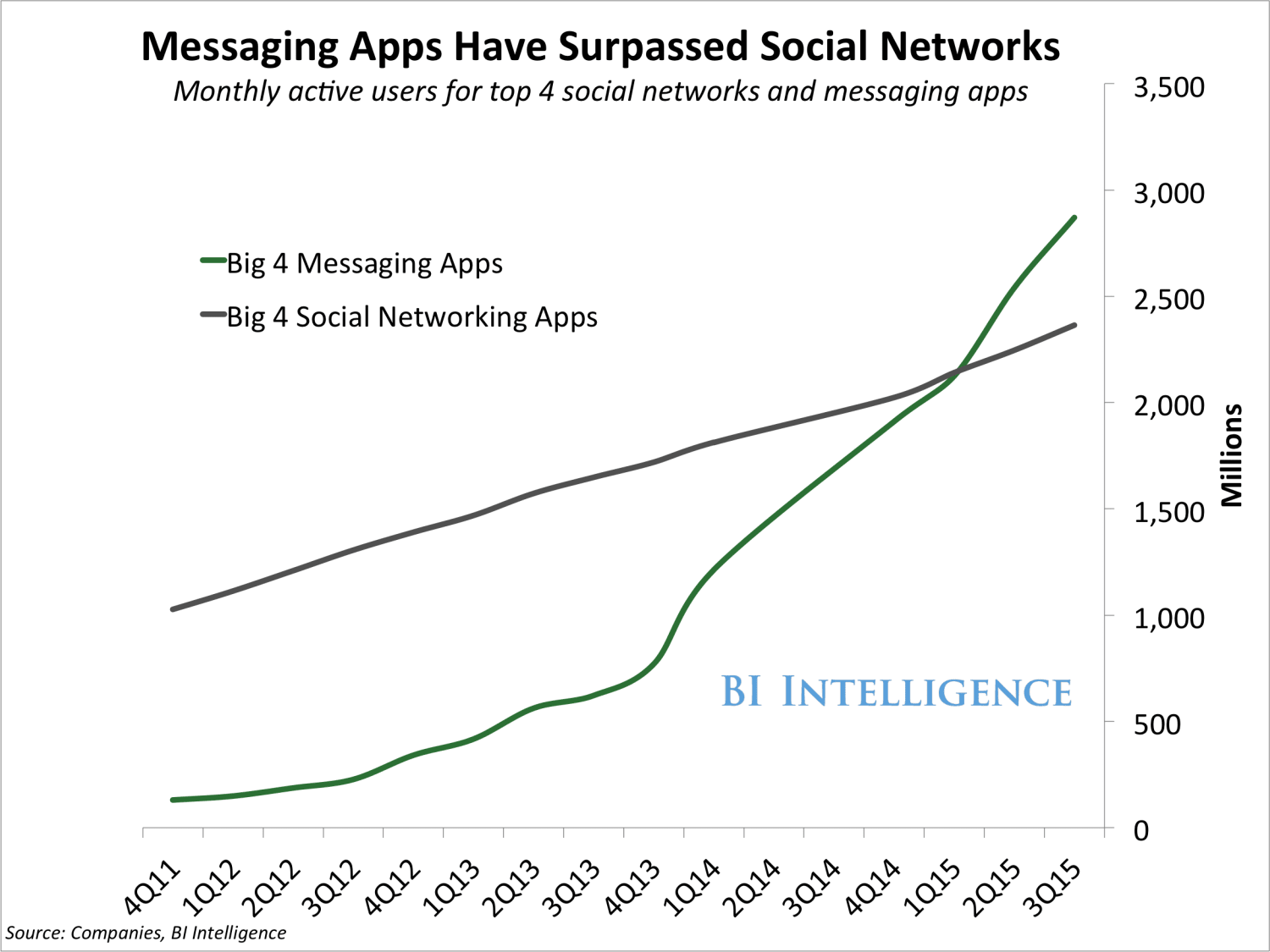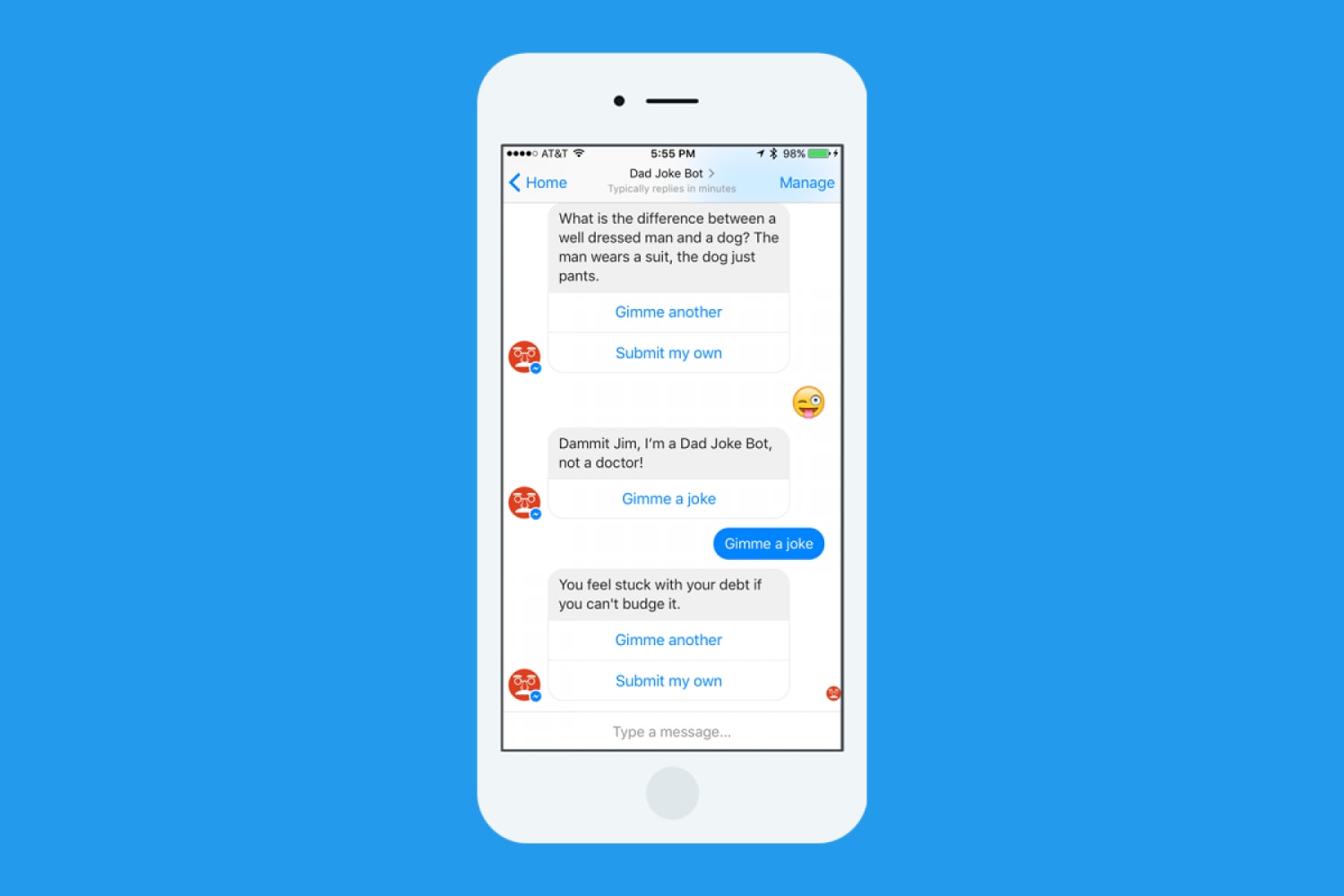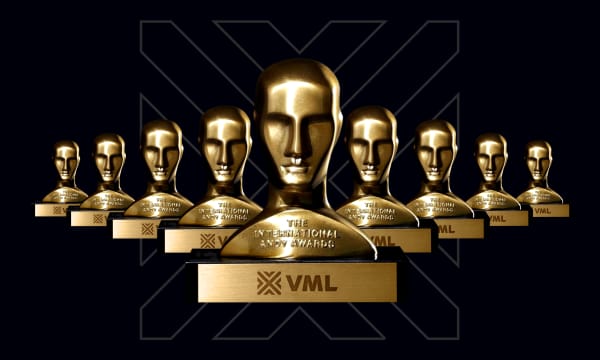How much of the chat element of these bots is scripted, and how much of it comes from algorithms?
Machine learning and artificial intelligence and natural language processing: All of those things are great and have been on the verge of breakthrough for some time. It’s really close to being tech that you can rely upon. But in the short term, it’s not. If you have a machine learning algorithm that is taking in user input and then building a predictive model, and you see users berating it or sending it negative energy, eventually it’s going to predict something negative and spit that back out at you. And that’s not good, especially in a brand application.
So a lot of it is scripted right now, at least a lot of the ones I’ve come into contact with. And that’s not by accident. Brands want to have control over what their message is. Rather than being reliant on technology that’s not quite there, they’re creating a fallback plan. They’re saying, “Let’s be prepared for something that might not necessarily be in line with what this engagement is. And then we can look back and see what we are receiving, and prepare for it better going forward.”
In my opinion, that’s what’s great about this space. On a website and apps, you can do tons of click tracking and optimized user experience. But really what you’re doing is moving around UI elements. With these conversational interfaces, if you’re a flower shop and you’re not offering carnations, but you have 50 people typing in “carnations” and you’re not prepared for it, maybe you know down the line that you’d better start selling carnations.
What are some of the advantages for brands of building out a chatbot, rather than developing their customer service?
In terms of a customer service angle, I think bots can augment it using chatbots. In the same way that for years we’ve called our cable company and there are automated responses, you can have a bot that intercepts issues that you have known answers for. And the second that something is not what you can account for, you can pipe that over to a person.
The other thing that’s cool is it’s really lightweight. Especially with this early technology, because it is kind of basic and new. If you take out the artificial intelligence, you can put something really lightweight out there fast, learn from it, improve and iterate quickly.
Something that I think could be cool going forward are the conversations we’ve had with television networks. Take Breaking Bad, for example. AMC knew right off the bat that people had an affinity for the Saul Goodman character, and they were able to spin that off into another show. Well, what if you have a secondary character that people have an affinity for, and you want to test out whether it would be worth it to spin that off to some other product? What if you create some sort of companion messaging app that ran along with the show and allowed users to interact with the secondary storyline a little bit deeper, and get real feedback?
With users’ responses to these messaging apps, you can cluster around certain words and figure out if a group of people really likes something and if it’s worth pursuing it further and putting serious dollars into it, like you would have to for a spinoff. You can imagine serious applications of that—you could do that for anything from a cereal to a service.
Are there any sectors that are early adopters where you see chatbots being used very effectively or gaining a lot of traction?
We’re seeing it in medicine and in places where you make an appointment. So ZocDoc is really good about sending text message reminders, and I think through that there’s another service where you can change your appointment times. Hotel concierge has been doing it for some time, where you can find out when your room is ready or when your car is downstairs. Small things like that. You can see that being extended out to a whole host of concierge services.
And it’s a nice experience. I don’t have to call the front desk, I don’t have to worry about anything. Anything that removes friction, like being on hold for a period of time—I think in those cases people are quick to jump on this trend.
How can chatbots can be used to change consumer behavior?
For full-blown commerce, I think it’s still a little early. The first bots where you could purchase something through a conversational flow have received mixed reviews. But there has been some cool stuff, typically around smaller areas that are ripe for the picking. Shopify has extensions over messenger that will give customers at a particular Shopify storefront updates on shipping and receipts over Facebook Messenger. If you’ve logged into Facebook to access that storefront, now you can just get pinged in Messenger when your package has shipped.
Wingstop, the chicken wing place, has an app. They don’t do delivery, so you have to pick up your order. You can create an order over Facebook Messenger and put in what store you want to pick it up from. Then when you go to pick it up, that’s when you pay for it.
You can see something like that, going forward, driving a bit of a behavior change. What’s happened so far is just monitoring.
In your opinion, what does the future hold for chatbots?
I think it’s a permanent way for brands to add value. People are going to show up to a brand page in the same way that they show up to a brand Twitter page right now, expecting the brand to talk to them. Whether that’s for customer service or to glean more information, it’s definitely going to be important.
As machine learning technology improves I think that’s going to be a big way to more accurately service customers. Whether you’re a small flower shop or a big-box store, you’re going to want some prescriptive control over things, and predictive technology isn’t necessarily there yet. But going forward, as you’re able to make that more robust and handle anything a user throws in front of you, it’s definitely going to be something that everybody is going to want to have.




